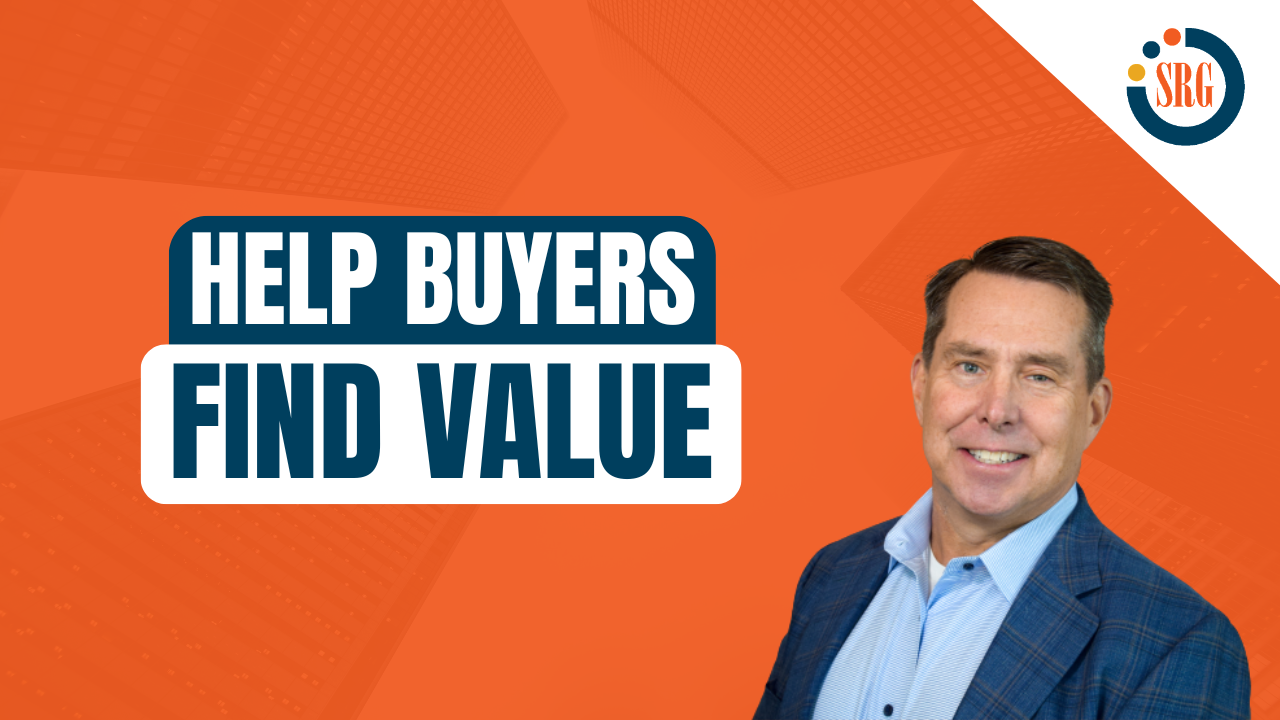Ask High IMPACT Sales Questions to Help Buyers Find Value


Being a sales professional in today’s internet-savvy, procurement-driven, cost-conscious environment is extremely challenging. Research suggests that buyers are more informed and typically are well through their own purchase process before you even connect with them. So what can a sales professional do in order to be relevant to buyers? Simple, ask high-impact questions to focus the sales conversation on issues that have value for the buyer.
Many sellers assume that the benefits of their solution are implied or obvious to the buyer. But this is a major mistake. Buyers often don’t know what they want and need your help in developing a solution; buyers can also have a difficult time understanding how a seller’s solution will benefit them. We suggest that as a seller you need to systematically explore key potential sources of value with the buyer in order to understand how your solution can add value, and be able to quantify, project, and add the values together to demonstrate the bottom-line benefit of your solution.
Identifying Value: IMPACT
Here is a simple acronym to help remember where to look to find potential value opportunities for your solution: IMPACT. This stands for Image, Money, Productivity, Advantage, Customer Satisfaction, and Total Cost of Ownership. By considering some key questions in each of these areas, we can uncover the two or three biggest value drivers for your solution and begin the process of quantifying the benefits. The categories and sample questions include:
- Image: How will our solution help improve the customer’s image? Think about your customer: Does your product or solution enhance the image of the customer or provide cache, or attract better quality customers?
- Money: How will our solution make our customers more money? Can you help the customer add revenue, reduce cost(s), or improve margins?
- Productivity: How will our product or solution increase the productivity of our customer’s operations? Can we help increase efficiency, improve throughput, or reduce labor costs?
- Advantage: How can we help improve the competitive advantage of our customers? Can we help the company compete and win or attract new customers?
- Customer Satisfaction: Can our solution improve customer satisfaction, reduce complaints, or improve retention and referral rates?
- Total Cost of Ownership: Is the total cost of ownership for your solution superior to the competition? Examples include reduced maintenance, fewer returns longer life, and/or better quality.
Presenting Your Solution: Quantify, Project, and Add
Once you’ve uncovered a few potential areas through high impact sales questions where your solution can impact the client, you need to work to quantify what the impact will be. For instance, if your solution will help improve customer service, what might this equate to in terms of increased re-orders and referral business? In another example, if your more expensive solution will last longer and result in fewer service calls for the client, how might this result in a lower Total Cost of Ownership over a period of three to five years? By making assumptions and validating these values with our client you are able to begin to quantify the benefits of our solution.
To develop an overall value proposition, you need to project these values over an agreed to time period to come up with a working number. By doing this in several categories and then adding these values together, you can develop a total, quantified value proposition to present to our client. Once you have a quantified value proposition, you should compare this to the cost of our solution to develop a return on investment and business case for our offering.
Sometimes the numbers don’t work in your favor, or there isn’t enough value in the numbers to justify the customer investing in your offering. What then? In this case, you may need to work harder to uncover additional areas where your solution can impact the business or you need to consider whether your solution is really a good fit for the customer. In our experience, there are often additional benefits to be uncovered if you are creative and work hard to develop a good understanding of your customer’s business needs. For example, in addition to the quantified benefits, are there intangible benefits that the customer will value? Intangible benefits will often be the tie-breaker that differentiates you from the competition.
It’s not easy engaging with today’s buyers. One powerful strategy is to focus the sales conversation on value. By helping the customer identify value opportunities, asking high impact sales questions, and then quantifying, adding, and projecting those values – you will be well-positioned for sales success.
💬 Join the Conversation
Do you have any other tips for helping the value conversation with your buyers? Share your tips and experiences here.
You may also enjoy these articles on Value-Based Selling
- Looking for Ways to Sell Value? Start with These 29 Questions
- Sales Performance Indicators: Unit vs Value Win Rate
- Four Types of Value Added Benefits and How to Quantify Them
